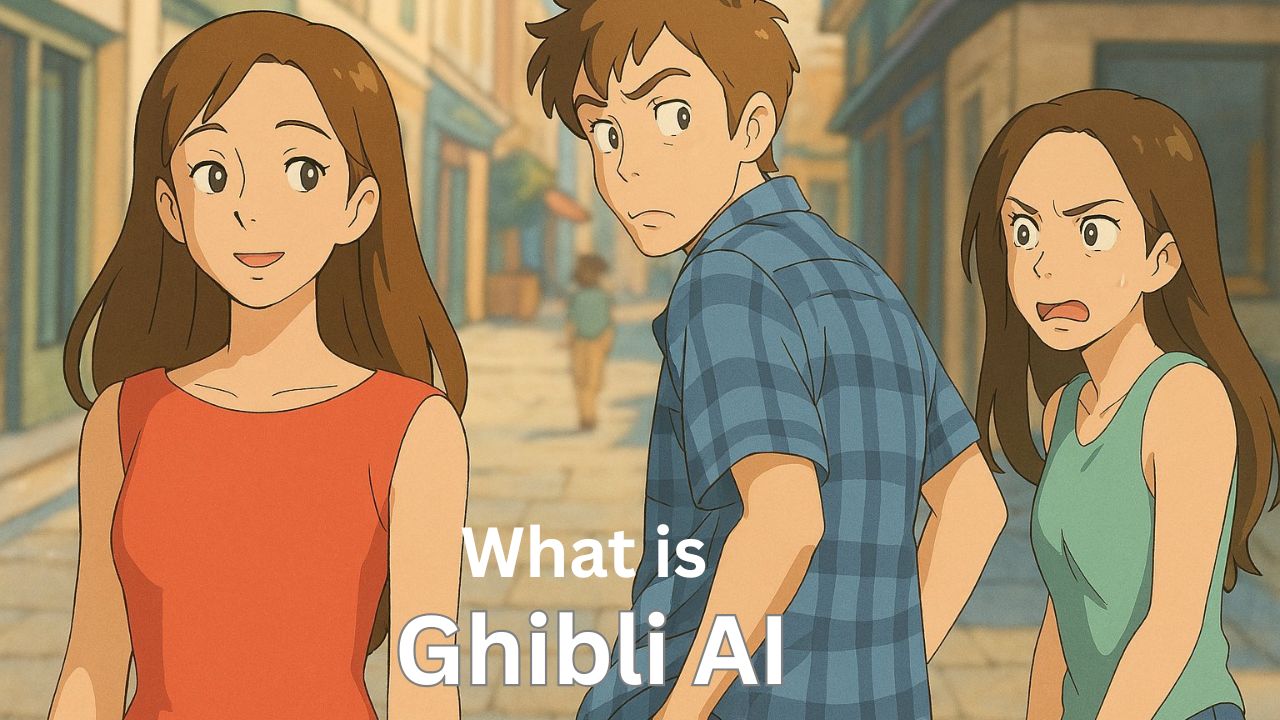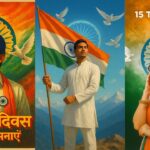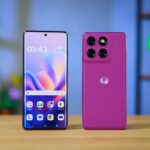Ghibli AI: In recent years, the world of art and technology has collided in fascinating ways, giving rise to tools that blend creativity with innovation. One of the most enchanting developments in this space is “Ghibli AI,” a term that encapsulates the use of artificial intelligence to recreate the whimsical, hand-drawn aesthetic of Studio Ghibli, the legendary Japanese animation studio. Known for masterpieces like Spirited Away, My Neighbor Totoro, and Howl’s Moving Castle, Studio Ghibli has long captivated audiences with its lush visuals and heartfelt storytelling. Now, thanks to AI, fans and creators alike can enter this magical world in a whole new way. Let’s dive into what Ghibli AI is, how it works, and why it sparks excitement and debate.
What Is Ghibli AI?
Ghibli AI refers to artificial intelligence tools and models designed to generate images, animations, or artwork inspired by the distinctive style of Studio Ghibli. This style is characterized by soft, vibrant colors, intricate backgrounds, and characters that exude warmth and personality—think of Totoro’s fluffy charm or the ethereal landscapes of Princess Mononoke. With AI, anyone can transform a simple photo or idea into a scene that looks like it belongs in a Ghibli film, all without picking up a pencil.
These tools rely on advanced machine learning techniques, often trained on vast collections of artwork, to mimic the studio’s signature look. Whether it’s turning a selfie into a wide-eyed anime character or crafting a dreamy forest scene from a text description, Ghibli AI brings the essence of Ghibli’s artistry into the digital age. It’s a bridge between the traditional craft of animation and the limitless possibilities of modern technology.
The Roots of Studio Ghibli’s Appeal
To understand why Ghibli AI has taken off, we first need to appreciate what makes Studio Ghibli so special. Founded in 1985 by Hayao Miyazaki, Isao Takahata, and Toshio Suzuki, the studio has built a legacy on its commitment to hand-drawn animation. Unlike many modern studios that lean heavily on digital tools, Ghibli’s artists pour countless hours into every frame, creating worlds that feel alive and characters that resonate deeply. The studio’s films often weave themes of nature, human connection, and wonder, wrapped in a visual style that’s both nostalgic and timeless.
This dedication to craft is what sets Ghibli apart and what makes Ghibli AI so intriguing. The idea of an algorithm replicating something so human and labor-intensive is both a marvel and a point of contention, as we’ll explore later.
How Does Ghibli AI Work?
At its core, Ghibli AI operates using machine learning models, such as those based on diffusion or generative adversarial networks (GANs). These models are trained on datasets that likely include Ghibli-inspired artwork or similar anime styles, allowing them to “learn” the patterns of color, texture, and composition that define the studio’s look. Here’s a simplified breakdown of how it typically works:
- Input: Users provide a starting point, either a photo to transform or a text prompt describing a scene (e.g., “a cozy village with a Totoro-like creature under a glowing sunset”).
- Processing: The AI analyzes the input and applies its understanding of Ghibli’s aesthetic, adjusting colors, softening edges, and adding whimsical details.
- Output: In seconds or minutes, the tool produces an image that mirrors the hand-painted charm of a Ghibli film.
Some tools, like those integrated into platforms such as ChatGPT or xAI’s Grok, allow for further customization. Users can tweak the mood, lighting, or even specific elements like adding a forest spirit or a flying machine. The result? A piece of art that feels like a love letter to Miyazaki’s vision, crafted by code rather than a brush.
The Rise of the Ghibli AI Trend
The popularity of Ghibli AI exploded in early 2025, fueled by advancements in AI image generation and a viral social media movement. Platforms like X and Instagram became flooded with “Ghiblified” photos of everyday snapshots reimagined as anime stills. People turned their pets into fluffy forest creatures, their vacations into magical landscapes, and their selfies into expressive Ghibli characters. Even brands and celebrities joined in, showcasing Ghibli-style versions of iconic moments.
This trend owes much of its momentum to tools like OpenAI’s GPT-4o and xAI’s Grok 3, which made Ghibli-style generation accessible to the masses. What started as a niche experiment quickly became a global phenomenon, with millions marveling at the ease of creating their own Ghibli-inspired art. The appeal is clear: it’s fun, nostalgic, and lets anyone tap into the magic of a beloved art form.
Why Ghibli AI Matters
Ghibli AI isn’t just a gimmick; it’s a testament to how technology can democratize creativity. For aspiring artists or fans without drawing skills, it offers a way to explore Ghibli’s world firsthand. Imagine a writer visualizing a story in Ghibli’s style or a game developer prototyping a Ghibli-esque setting, all without years of training. It’s a tool that lowers barriers and invites playfulness, making art more inclusive.
Beyond personal use, Ghibli AI hints at broader possibilities. Independent creators could use it to produce animated shorts, concept art, or even marketing materials inspired by Ghibli’s charm. It’s a spark for the imagination, blending human ideas with AI’s efficiency.
The Controversy Surrounding Ghibli AI
Not everyone is cheering for Ghibli AI, though. The technology has stirred a heated debate, especially among artists and Ghibli purists. At the heart of the controversy is Hayao Miyazaki himself, the studio’s co-founder and a vocal critic of AI in art. In a 2016 documentary, Miyazaki famously called an AI-generated animation “an insult to life itself,” reacting with disgust to its lack of soul and humanity. For him, art is about the painstaking effort and emotion poured into every stroke something an algorithm can’t replicate.
Critics argue that Ghibli AI cheapens this legacy. By mimicking Ghibli’s style without the labor or intent behind it, they say it risks turning a craft into a commodity. There’s also the question of ethics: if AI models are trained on Ghibli’s copyrighted works without permission, is it a form of artistic theft? While “style” isn’t legally protected, the line between inspiration and exploitation feels blurry to many.
On the flip side, supporters see Ghibli AI as a celebration, not a slight. They argue that it introduces Ghibli’s beauty to new audiences and keeps its spirit alive in a digital age. The debate reflects a larger tension between tradition and innovation, a tension that’s unlikely to fade anytime soon.
How to Try Ghibli AI Yourself
Ready to dive in? Several free tools make it easy to create Ghibli-style art without a subscription. Here’s a quick guide using xAI’s Grok 3 as an example:
- Access the Tool: Open Grok via the X platform or its app. or you can try another AI like ChatGPT and many more available on the Web.
- Choose Your Input: Upload a photo or type a prompt like “a serene lake with a Ghibli-style girl in a boat.”
- Generate: Hit enter and let the AI work its magic.
- Refine: Adjust the result if needed, then download your creation.
Other options like Craiyon, Fotor, or Getimg.ai offer similar features, each with its flavor of Ghibli charm. Experimentation is key; play with prompts to find the perfect balance of whimsy and detail.
The Future of Ghibli AI
As AI technology evolves, so will Ghibli AI. We might soon see it expand beyond static images into short animations or interactive experiences, bringing Ghibli’s worlds to life in ways Miyazaki never imagined. Yet, its future hinges on resolving the ethical questions it raises. Can it honor Ghibli’s legacy while carving its path? Only time will tell.
For now, Ghibli AI stands as a fascinating intersection of art and innovation a tool that invites us to dream, create, and reflect. Whether you see it as a tribute or a trespass, one thing is certain: it’s keeping the spirit of Studio Ghibli alive in a bold, unexpected way. So, why not give it a try? Your own Ghibli adventure is just a prompt away.
Last Conclusion
Ghibli AI is a fascinating intersection of nostalgia and innovation, allowing fans and creators to explore Studio Ghibli’s enchanting world in new ways. While it presents challenges regarding originality and ethics, it also offers exciting tools for artistic expression.










